The school textbooks on geography have continued to emphasize physical aspects of geography and only a marginal interest in the human–nature relationship. In recent years, geography as a school subject has lost much ground within the larger education system in India.
Geography as a Discipline
Geography is a discipline that is, by nature, extremely interdisciplinary. We can’t talk about “Geo” (Earth) without considering its mechanism that relates to scientific explanations, and at the same time, we can’t talk about “Geo” without its interaction with human beings. Geography discusses “spatial variations on the earth’s surface and of human relations with their environment”. In India, geography is a compulsory subject in schools. In primary grades, geography is introduced as an independent subject in some school boards, whereas in many others, the topics are taught as part of Environmental Studies (EVS). At the secondary stage, geography becomes part of the broader social science curriculum, taught alongside economics, history, sociology, and political science. However, within this framework, geography often remains a marginalised subject for various reasons.
Perception of Geography as a School Subject
Several students cannot understand geography during their school time. It remains an isolated subject dealing with many abstract concepts; therefore, the students practice rote memorisation. A few years back, we conducted exploratory research, funded by Azim Premji University, Bengaluru, to understand the challenges of geography learning and teaching in schools. The research was conducted for almost three years, and the data were collected from more than 100 teachers teaching geography to the children of 6th to 10th grade across India. Around 130 participants in the 18-45 age group took part in group discussions and semi-structured interviews to express their challenges while studying geography in school.
We received a vast range of interesting responses; however, most of the participants who studied geography as a school subject agreed that they hardly found geography interesting. Here is one such interesting response, similar to those given by participants across various age groups: “I didn’t enjoy Geography class in school. The teachers were boring and didn’t seem to be passionate about the subject. We just memorised facts about countries and capitals, and it didn’t feel like we were learning anything meaningful. Now, while doing my post-graduation, if I reflect, I feel that the factors of not liking Geography were numerous. Also, many of my friends would agree with me to a great extent.”
The Challenges Associated with Geography Teaching and Learning
The key findings of the research reveal a vicious cycle contributing to most students’ lack of interest in geography. The four main challenges, evident from the survey data, are discussed below.
Challenge 1: The curriculum is not interesting, and the expectation from the curriculum leads to some practices of stereotype teaching, resulting in a decline in interest among the students.
The decline of geography reflects an overall decline in the significance of social science teaching in schools. This state of geography teaching becomes a matter of even greater concern when one tries to comprehend the lag between the development of the discipline and its application in social science education in schools (Batra, 2006). A clear pattern emerges when examining the geography curriculum in India: at the school level, there is a strong emphasis on physical geography. It is true that “School geography’s overwhelming ‘physical’ nature is explicit not only through its contents but also through its ontological posture. The focus remains on patterns of natural phenomena (like atmospheric pressure, wind, etc.) and how natural forces modify the Earth’s surface through processes like erosion. Such a framework intends to understand natural laws but limits itself from the realistic nature of relationships between nature and humans and their transformations” (Sunny, 2006).
While the curriculum of geography varies from one board to another, there is a common emphasis on prioritisation of correctness over conceptual learning in most of the curricula, which also impacts the loss of interest in conceptual understanding of students. In the school education system in India, there is a general overemphasis on the “correct” answer and ensuring to score in the top percentile in assessments. For many students, this adds to their pressure and overemphasis on correct answers, which is a source of major discontent. As stated by many respondents, to ensure completion of the syllabus and to score in the top percentile, rote memorisation is often encouraged rather than focusing on understanding the concepts. Usually, students tend to find geography textbooks information-dense, including their presentations, “hence school children, without understanding the basic principles of the discipline, used to simply memorise the textbooks or answers to questions given at the end of the lessons” (Singh, 2020).
While discussing the impact of rote learning, one of the respondents mentioned, “Rote learning left us feeling disconnected from the subject”. According to the National Curriculum Framework 2023, one of the aims of social science education is, “understanding how society functions” which mentions, “students will develop an awareness and understanding of…the interaction between nature, natural resources, and human being, including the spatial and temporal patterns arising out of this interaction, its effect on human life, and the impact of human activity on nature” (Ministry of Education, 2023). Given that this is the stated aim of the National Curriculum Framework 2023, schools and school functionaries must prioritise it. However, in practice, geography education in schools often lacks experiential learning, resulting in abstract teaching that leaves students feeling disconnected. As a result, many students struggle to see the relevance of geography in their everyday lives.
Challenge 2: The contents in the textbooks are presented in a “boring” and “not interesting” format.
The research has found that geography textbooks are often designed in such a manner that the books tend to be information-dense and of poor quality, without enough appropriate visual aids. A close examination of the textbooks in geography reveals that “both physical and human elements of the earth are mostly treated autonomously” (Alam, 2020). This means that there is a clear division being made between physical and human geography. The pertinent question here is: Does this clear division create a problem? If so, what problem does it create? Let us analyse this problem.
When learners are introduced to the physical features of the Earth, it is important to introduce the importance of those features in our daily life; otherwise, the concepts remain redundant and irrelevant to the learners. The learners do not understand the relationship we have with the physical aspects of the planet we live on. Also, the impact of our actions can cause consequences that affect many lives. Even though attempts have been made to integrate physical and human geography, many problems have been associated with it (Singh, 2020). Issues include how the subject is treated by the teachers as the chapters are encyclopaedic, with much emphasis given to the “facts and figures about the geology, landforms, climate, populations, society, polity, and economy of various regions of the world” (Alam, 2020). When this is the case, learners often find the subject to be boring, with no understanding of how relevant it is to their daily lives. In Indian schools, there is a crisis among learners in the aspect of geography education, where it “shows that there is a general lack of understanding of fundamental geographical concepts, discipline and basic knowledge of world geography among geography students who have just completed their school” (Alam, 2015).
Challenge 3: The lack of content knowledge of the teachers to transmit the content to the students in a meaningful, appropriate, and interesting manner.
Our research has revealed that there is a challenge associated with the perceived academic and practical value of geography. In many countries, including India, geography is often perceived as less important when compared to subjects such as mathematics, science, and English. In Indian schools, social science is frequently taught as a single subject by one teacher, who may not necessarily be trained in all its constituent disciplines. Our research has revealed that only 36% of teachers teaching social science in schools had studied geography up to their graduation. Despite this, they are expected to teach geography in classrooms. This reflects a broader perception that geography does not require specialised knowledge to be taught effectively. For instance, the development of the geography curriculum by the NCERT under the National Curriculum Framework for School Education (NCFSE) – 2000 was guided by the assumption that “anyone can teach geography” (Singh, 2020). This assumption, however, had its issues. As Alam (2015) explains, “… geography is taught as a part of the social science subjects. If the teacher of social science happens to come from a discipline other than geography and has no training in geography, he/she finds it difficult to teach the subject, and skips over the geography portion of the syllabus.” Consequently, learners often lack the necessary academic support to engage meaningfully with the subject.
The present situation in India is such that there are numerous schools where social science is taught by one teacher, who comes from any discipline within social science or does not even have any social science background at all. Most of such teachers do not come with a college degree (graduation) in geography. As a result, they often struggle to explain various concepts. The pattern indicates that the teachers coming with humanities or other social science backgrounds often struggle to effectively explain concepts related to natural phenomena, such as the solar system, climate, and ocean currents. Conversely, teachers with science or mathematics backgrounds who teach geography tend to face difficulties in explaining topics related to human geography, such as population, settlement, and cultural patterns.
This raises an important question, which often we fail to notice: Why is there an institutional emphasis on graduation-level specialisation for teachers of science, mathematics, and even language (especially English), but not for teachers of social sciences, even though social science comprises three distinct disciplines – history, political science, and geography? Are we trying to undermine the importance of social science education by neglecting the need for expertise in the discipline? This oversight contributes to a much broader societal and institutional undervaluation of geography, strengthening the perception that it offers limited academic and career opportunities (Alam, 2015).
Challenge 4: The lack of appropriate pedagogical approaches used to transmit the contents to the students in a meaningful, appropriate, and interesting manner.
This challenge can be categorised into two types: (i) suboptimal instructional strategies and (ii) educational content divorced from everyday experiences.
(i) Suboptimal instructional strategies: The Secondary Education Commission, also known as the Kothari Commission (1964-’66) which is still referred to as one of the most important pivotal bodies in the Indian education system, identified “the teacher as the single most important factor influencing the quality of education” (Alam, 2015). It has been found during our research that numerous teachers’ reliance on rote learning, the use of outdated pedagogical approaches, and a lack of attention to the content make geography irrelevant to students. As students do not understand the meaning and relevance of the concepts they learn, many of them lose interest in the subject. Many respondents stated that geography has always been taught in a ‘boring’ manner. When this occurs, how can we expect students to be engaged in the classroom? This lack of engagement eventually results in a loss of motivation to learn the subject meaningfully. Instead, geography is increasingly viewed as just another subject to pass by memorising facts, valued more for the marks it can yield than for the understanding it can foster.
(ii) Educational content divorced from everyday experiences: The lack of opportunities to apply geographical knowledge to real-world situations can make it difficult for students to understand the value of the subject. This connects to another major challenge within geography teaching, which is a lack of hands-on experience. This lack of learning or practical engagement, such as fieldwork, can make it difficult for students to develop curiosity or a deep understanding of geographical concepts. Many concepts in geography are difficult for students to grasp due to their abstract nature.These include the solar system and universe, latitude, and longitude, parts of the Earth’s interior, types of landforms, etc. So, without hands-on or demonstration through 3D models, it is difficult for students to understand the concepts well. For example, when a teacher teaches the landforms of various parts of India, how can a student from the coastal region of Kerala or Tamil Nadu understand the desert without ever experiencing a desert-like terrain in life? Similarly, for a student from an extremely arid region of Rajasthan, it is very difficult to imagine the devastating flood in coastal Kerala or Tamil Nadu. While it is difficult to give actual exposure to all such places to each student, it is possible to present such ideas through simple, handmade, and low-cost models.
During our group discussion, many respondents mentioned their dissatisfaction with learning geography in schools. Here are some of their pertinent questions:
“Why didn’t our teachers take us to the nearby agricultural field to understand soil and agriculture?”
“Why couldn’t they take us to the nearby road to understand the patterns of human settlement or ask us to map our surroundings standing on a particular point in our locality?”
The respondents’ experiences in our research highlight a vicious cycle in the teaching and learning of geography. Many shared that they never found geography to be a relevant or engaging subject during their school years, which led to a lack of interest in the subject. While a few found physical geography somewhat fascinating, others found it to be boring. This disinterest inevitably affects the demand for geography at the undergraduate level. Without enough graduates with strong subject knowledge, where will our future geography teachers come from? How will we generate interest in environmental awareness, sustainability, and man-environment relationships among the future generation? The sustainable development of any nation needs constructive thoughts, and therefore, it is essential to promote geography literacy among our younger generation.
References
- Alam, S. (2020). Geography Syllabus in the Secondary Schools of India: Issues and Challenges. Romanian Review of Geographical Education, 9(2), 46-66.
- Alam, S. (2015). A note on the status of geography teachers in Indian schools. Geographical Education (Online), 28, 59-65.
- Banerjee, B. K. (2006). Geography education in Indian schools. Internationale schulbuchforschung, 283-292.
- Fatıma, M. (2016). Perceptions of geography as a discipline among students of different academic levels in Pakistan. Review of International Geographical Education Online, 6(1), 67-85.
- Ministry of Education. (2023). National Curriculum Framework for School Education 2023. Government of India.
- Singh, C. S. (2020). Geographic education in Indian schools: development, trends, and issues. J Geogr, 8(2), 1-10.
Disclaimer: The views expressed in this article are of the authors solely. TheRise.co.in neither endorses nor is responsible for them. Reproducing this content without permission is prohibited.

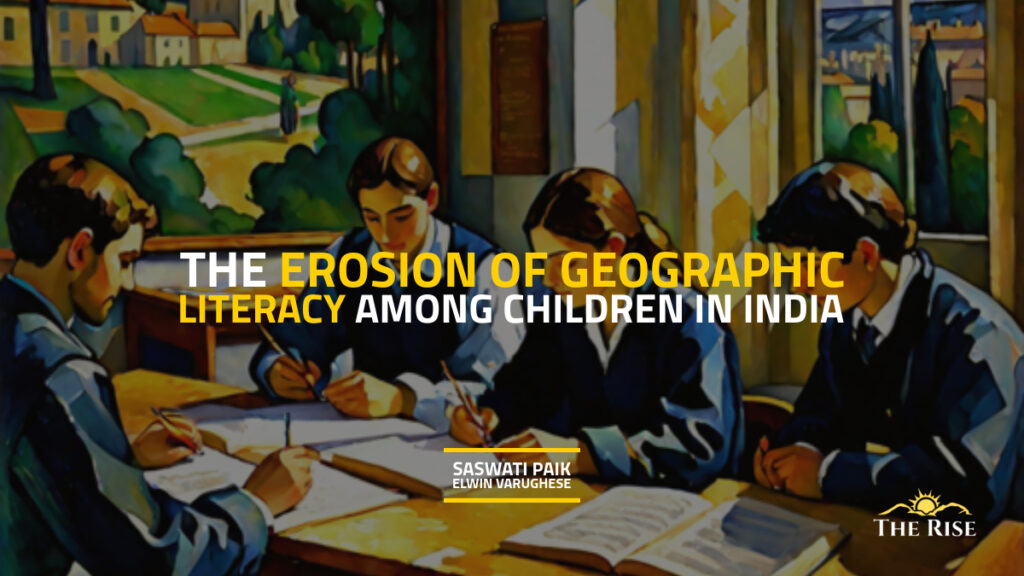


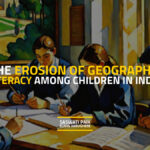


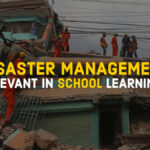

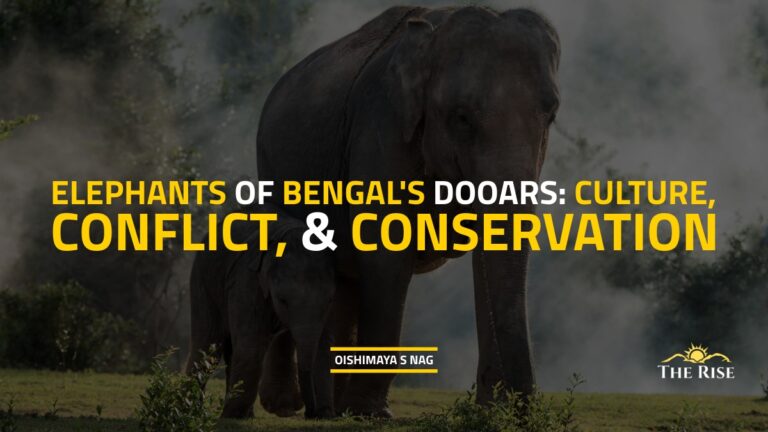
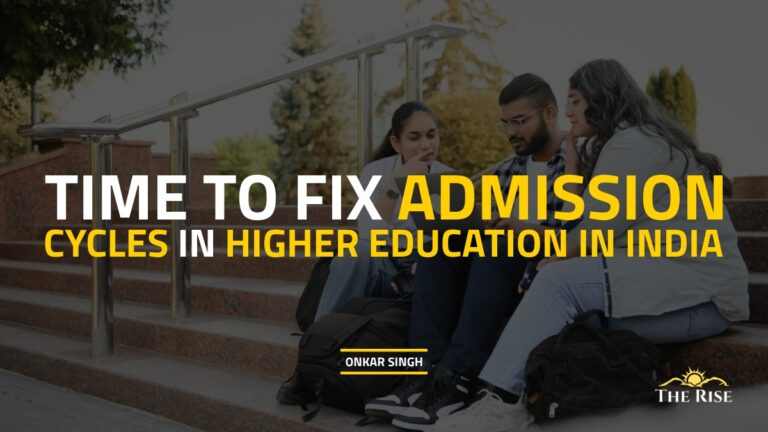

Nice read
Pingback: Singapore-China Diplomatic Spotlight - TheRise.co.in
Pingback: Rethinking Global Education Trends - TheRise.co.in
Pingback: Failing Government Schools in India - TheRise.co.in